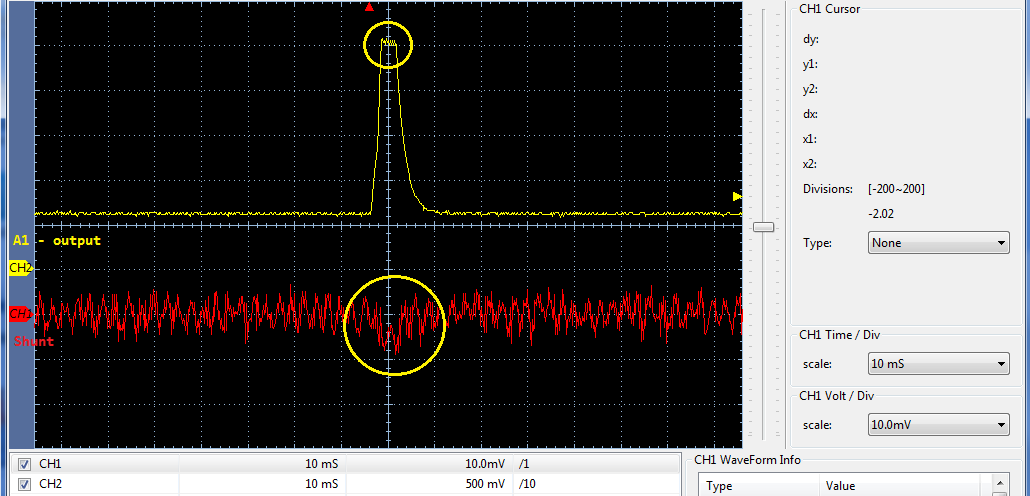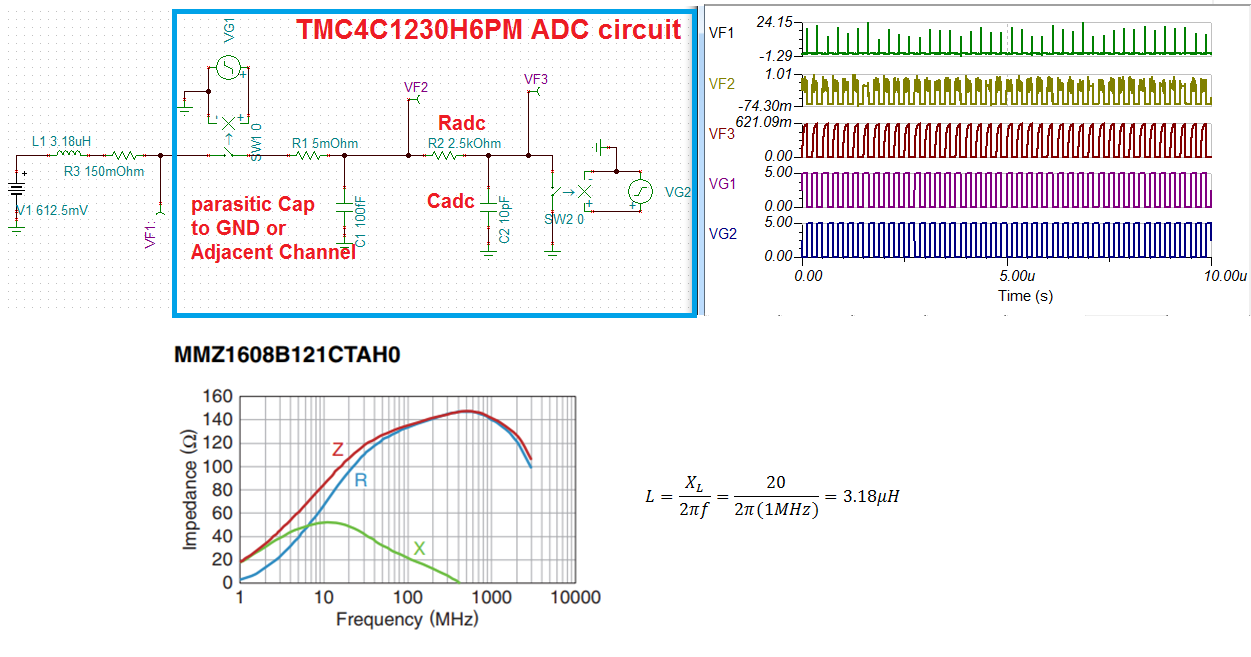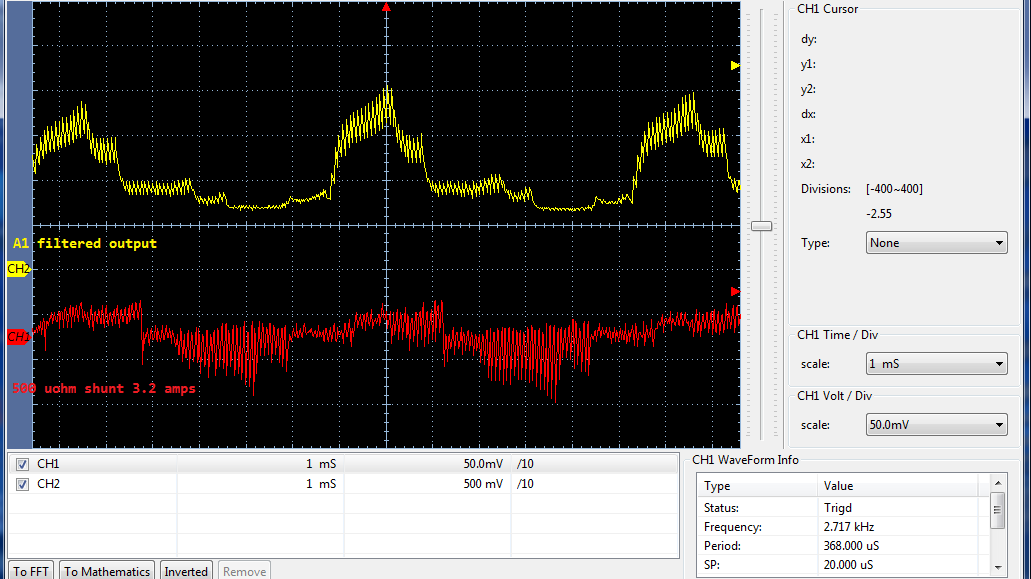Other Parts Discussed in Thread: UCC27714, TIDA-00909, INA282
After making 75k series resistance output of A1 to SAR input a much larger transient occur to cause fault comparator trip. With 4R87k A1 output 1st transient pulse be just under comparator fault trip 2.7v. Below transient being far to large either way, A1 output has sudden gain explosion for no good reason we can easily pinpoint. The spike below would be 60 amps, no way has a 60 amp surge occurred!
Notice shunt signal lowers below ground yet A1 output seemingly moves in opposite direction, sometimes single 30mv pulse occurs. It seems the A1 must have much larger series R to stop sudden 1st transient. There is No 10k pull down on A1 output, seemingly may cause precision error % to increase? Otherwise wise 10k pull down on output would make path for ground noise to enter ADC channel.
Does the A1 output need much greater series resistance to stop current fold back effecting output? Does the A1 output specifically require a pull down R in order to normalize shunt inrush current from effecting the output gain magnitude in transient states?






